The Government Museum, Chennai holds a very significant collection of sculptures, in particular the sculptures from the Buddhist site of Amaravati. I took up the Fellowship in November 2000 in order to see the collection of Amaravati sculptures in the British Museum and to learn about display and conservation techniques. I learned from the British Museum how they had refurbished the Hotung and Asahi Shimbun galleries. The British Museum has conserved all the Amaravati sculptures and then mounted them on steel frames supported by treated rubber cushions.
Custom Search 1
Sculpture

Amaravati marbles: Study and Care
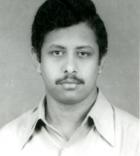
Study and documentation of Chola Bronzes in the museums of India
This award was a timely help, when I was planning to document the Chola bronzes in and around the Thanjavur region for the visitors of our museum. After getting this award, I extended the area for collecting data on Chola bronzes to the museums of India. This gave me an opportunity to acquire the latest museum techniques and to gain more information about the provenance of Chola bronzes kept in different museums. I plan to bring out a small catalogue about Chola bronzes which will be useful to our visitors.
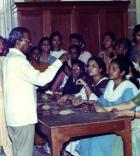
Study of the origin and spread of Buddhism in Tamil Nadu with special reference to the Chola country
I felt very happy at the time of receiving the award as my burden was reduced to some extent. For my thesis " Buddhism in the Chola country" I had to cover nearly 100 villages in and around the region. During the fieldwork I was able to photograph nearly 50 granite Buddhas in the area for which the only financial support was the NTICVA grant. I was also able to contact museums inside and outside India to get photographs of Nagapattinam Buddha bronze sculptures. The grant allowed me to carry out and complete this work in a nice manner.
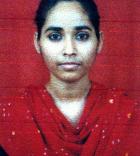
Dokra Bronzes of Tribal India
This award gave me an opportunity to do fieldwork and learn the technique of lost-wax process in Dokra bronze-casting. As a student of Design (BFA) I was able to use the technique to make jewellery and incorporate the Dokra Bronze tribal forms in two dimensional textile design. Having graduated from Kala Bhavana, Visva Bharati University Santiniketan, I am embarking (2001) on History of Art at the National Museum Institute, New Delhi. I have also made a proposal for research for a Junior Fellowship in Visual Art from the Department of Culture (Govt of India).

Baluchar silk and temple terracottas: a comparative study of motifs
The award gave me a good opportunity to travel and visit many terracotta temples in remote villages in Bengal that remained unknown and undocumented. I have (2001) prepared a popular article and two research papers are ready for publication. I interact usefully with a stream of students and research workers from the Kala Bhavana, Visva Bharati and Burdwan University Bardhaman.

Pillar sculptures of the Mahamandapa of Ramaswamy Temple
The findings of the project were communicated in national seminars. Based on these pilot studies I have now (2001) undertaken a major project, funded by the University Grants Commission. Simultaneously I have been doing a PhD on the ecological and environmental impact on monuments and their conservation and hope to develop this in the context of temple studies. The funding shortages in my institution were balanced by the timely awards received from your Trust, and my project work was also considered as part of my career development evaluation by my institution.
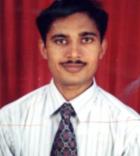
Terracottas of Bihar (600 BC to 1000 AD)
The grant was very useful in preparing my MA dissertation in this subject and increased my interest in it. I am now (2001) pursuing my PhD in the field of terracotta art. I have published articles on contemporary terracotta art of Mithila (Bihar) and taught related subjects to MA students.

Pointing Method of Stone Carving in Jaipur, Rajasthan
The grant helped me to work on this subject - a project that I had dreamt of doing but could not take forward because of monetary problems. It helped me to come to know about a traditional method of carving which is almost dying out. It has both helped my creative work as a sculptor and given me knowledge that I can pass on to my students so that they can use it in their work. I have also discussed the procedures with colleagues who work on portraiture.
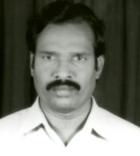
Relief sculptures as revealed from Hero-stones in Thiruvannamalai, Samburayar and North Arcot Districts of Tamilnadu
The grant was very helpful to me in allowing me to discover a number of hero-stones and inscriptions during the Pallava and Chola periods in Vellore and Thiruvannamalai districts and to prepare research articles in vernacular research magazines like Hindu, Avanam, Pulamai, Dinamani etc. I am currently (2001) doing PhD research in the field of Hero-stones .

Study of South Indian sculpture in UK museum collections.
I visited many museums in the UK during my stay there, and both documented South Indian sculptures and bronzes and display methods. I subsequently developed display methods for the Government Museums at Vellore and Cuddalore. Since then I have received a fellowship awarded by the Institute for Social Science and Research at Vellore. I delivered about 100 lectures in the period between 1994 and 2001 to college and school students, Rotary and other clubs, and groups of visitors to the Vellore museum.
